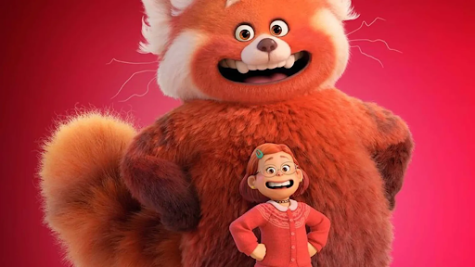West Side Story Review: A Thoughtful Take on a Timeless Classic

Source: iMDB
The first time I watched my grandmother’s favorite movie, West Side Story, I was seven, sitting on the couch next to her. I was wide-eyed throughout the whole thing, but as the end credits rolled, I was frozen. “That’s it?” I thought to myself. “They just die?” The 1961 West Side Story was the first movie I had ever seen that did not have a happy ending. The Romeo and Juliet inspired romance tells the story of two teenagers caught between their respective rival gangs in the city streets of the Upper West Side. I watched Steven Spielberg’s new version of the iconic story, which hit theaters on December 10, 2021, but landed on Disney Plus on March 2, 2022, this past week, with my grandmother still next to me. As I watched, I came to realize that that bleakness I felt as a kid is what makes the story so powerful; West Side Story is designed to confront life’s tragedies and heartbreaks head on all while putting on an extraordinary spectacle of song and dance. Spielberg’s take on the film is executed beautifully, as it continues to fearlessly challenge the world while working in much-needed depth to the timeless classic.
The new movie has just a few major differences, but still follows the same core plot as the original. Tony, played by Ansel Elgort, is an ex (but still loyal) member of the all-white gang dubbed the Jets, which is led by his best friend Riff. He falls in love with Maria, the sister of Bernardo, who is the leader of the Puerto Rican gang called the Sharks. Spielberg’s version stays true to the original in many ways, keeping consistent with the songs, costumes, and overall story, right down to the iconic whistles and snaps at the beginning of the movie. However, he shifted the story in the places it mattered most. To start, the Puerto Rican characters are actually played by Latinx actors. In the 1961 version, white actors were in brownface, a racist tool in which actors put on makeup to appear as a darker-skinned person. Spielberg’s version is much more racially conscious. The talented lineup gave him the chance to develop the characters in new and exciting ways, providing audiences with a deeper insight into why the characters act the way they do. For example, take Riff, who is played by Mike Faist. Faist clearly portrays him as a scared, angry kid that clings to the Jets so much because it’s the only thing that he has. While it may not excuse his actions, it provides context for them, which I believe is what Spielberg intended to do with the film. Ariana DeBose is another prime example of the endless talent in this production, which I believe will soon make her one of the biggest household names in entertainment. She plays Anita, Bernardo’s girlfriend and a mother/sister figure to Maria. Every time she came on the screen, she lit it up, while still managing to harness heavy emotions when needed. It takes a truly talented actor to be able to sob over a lost love in the same streets where she sang about the promise of her new life just hours before. The inspiration behind DeBose’s emotional acting most likely came from Rita Moreno, who originally played Anita. Moreno won an Oscar for the role and was the only Latino in the original cast. Moreno even came back to perform in Spielberg’s version, this time as a shop owner who provides some mature insight into the intense hostility between the gangs; Moreno’s role resonated with fans of the original while still allowing for the new generation of performers to claim the spotlight. Part of that new generation is twenty-year-old Rachel Zegler, who took on the role of Maria wonderfully. Her distinct and obvious facial expressions show Maria’s innocence, excitement, and caution, and her singing talent is unmatched. I could listen to her sing “Tonight” for hours on end; she hits every note so cleanly and beautifully. I think we will definitely see more of Zegler in the future. The only cast member that has not received an overwhelming amount of praise for their performance is Ansel Elgort as Tony. It felt as though Spielberg cast this “movie star” to give the film more credibility, but even so, I think Elgort fell short of the rest of the cast’s talent. He struggled to keep his New York accent consistent throughout the whole movie, which was disappointing coming from such a highly renowned actor. Vocally, he was able to hold his own, but could never compare to the quality of Zegler’s voice during their duets. I’ll give him a break, since it’s a lot to live up to. Elgort clearly did the best he could, but I can’t help but wonder if there really wasn’t anyone more talented out there that would have been a better candidate. It didn’t ruin the entire film, though, which is a testament to the rest of the cast.
All in all, Spielberg’s West Side Story is a vision of thoughtful color and light paired with expert acting and singing that the cast has recreated well enough for a new generation to enjoy. Not only is it a timeless story, but also an important one that allows us to almost make sense of the messy parts of being human. You won’t want to miss this film; it might just be one that you’ll show your grandkids one day.
jy/js/im
For more breaking news and photos, follow The Wingspan on Instagram and Twitter @CHSWingspan.
The opinions stated in this article do not necessarily reflect the views and beliefs of the Wingspan staff as a whole.








